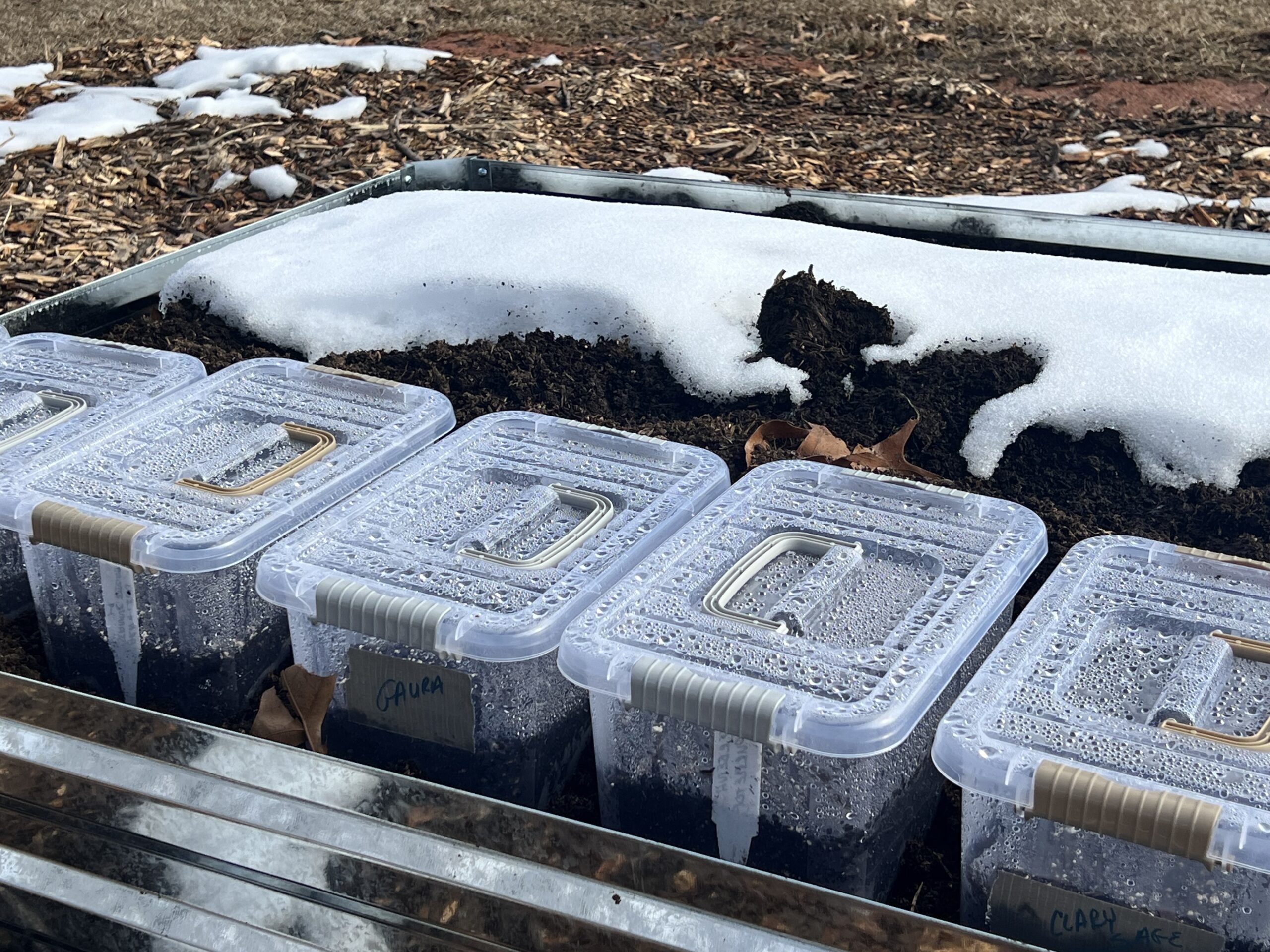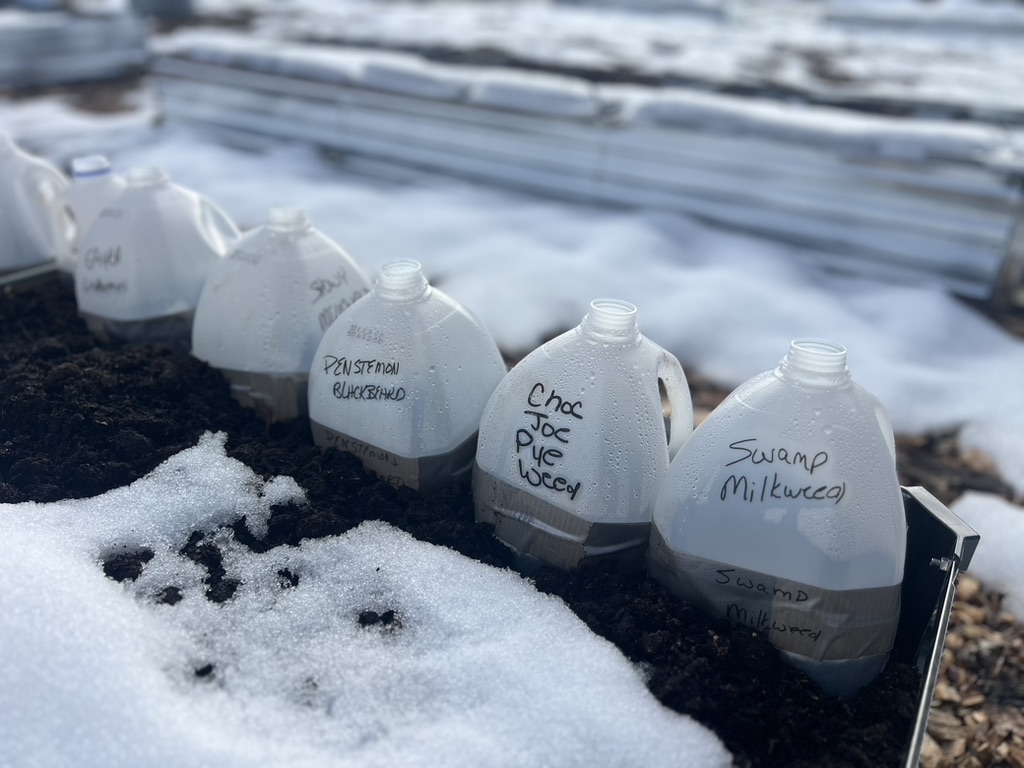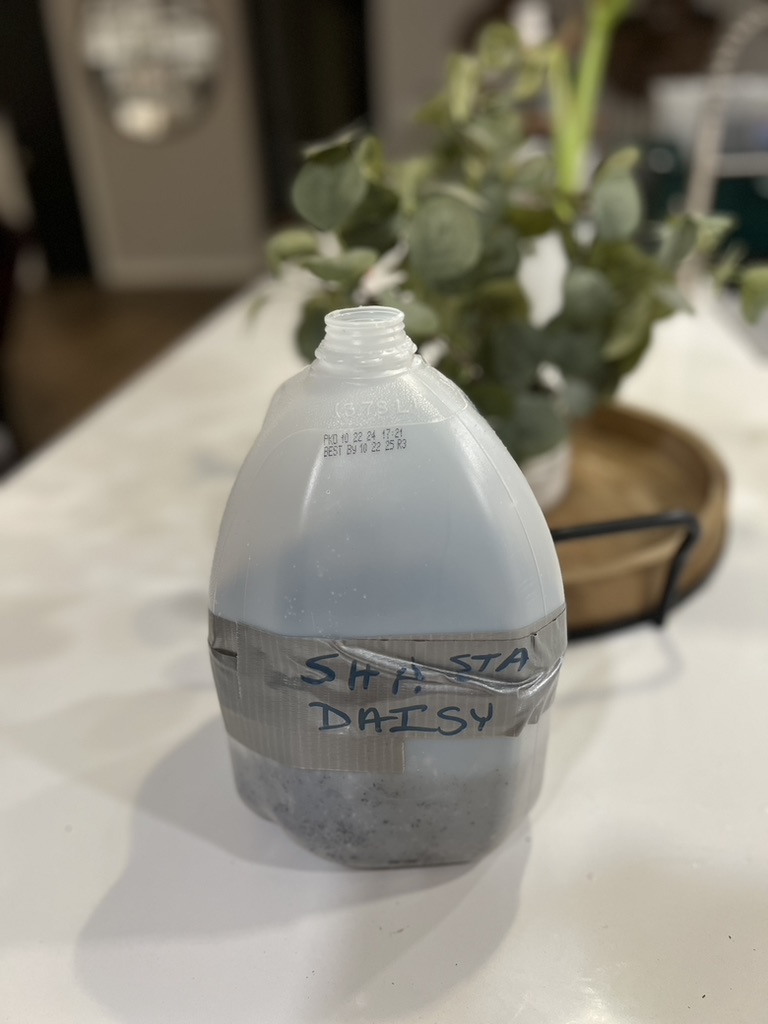As winter comes, gardeners look forward to starting seeds for the new season. Winter sowing is a great way to grow a garden, and the right containers are key. In this guide, we’ll find the top winter sowing containers for a successful 2024 garden.
Key Takeaways
- Discover the various types of winter sowing containers and their benefits for cold-weather gardening.
- Learn about the essential features to consider when selecting the best containers for your winter sowing needs.
- Explore recycled and professional container options that cater to your winter seed starting requirements.
- Uncover common mistakes to avoid and best practices for maintaining your winter sowing containers.
- Gain insights on storage and reuse strategies to maximize the longevity of your winter sowing containers.
Understanding Winter Sowing: A Gardener's Guide
Winter sowing is a special way to plant seeds outside in the cold winter. It uses the seasons to help seeds grow strong in early spring.
What Makes Winter Sowing Special
Winter sowing is different from starting seeds indoors. It uses cold temperatures to get seeds ready to grow when it warms up. This method helps plants start growing naturally.
Benefits of Winter Sowing for Plant Growth
Winter sowing helps plants grow well. Seeds planted outside in winter get used to changing temperatures and moisture. This makes them strong and healthy when moved to the garden.
Ideal Timing for Winter Sowing
The best time to start winter sowing depends on the plant and your area’s weather. Generally, it’s from late fall to early spring. This ensures seeds get enough cold to start growing in spring.
Best Winter Sowing Containers for Your Garden
Choosing the right container for winter sowing is crucial for your seedlings’ success. You can use everything from old household items to specialized containers. Each option has its own benefits for your garden.
Recycled containers like milk jugs and plastic bottles are great choices. They’re good for the environment and work well for seedlings. These containers help with drainage and air circulation, which plants need to grow.

If you prefer a hassle-free option, consider commercial seed starting containers. These are made for winter sowing and have features like built-in drainage. They ensure your seedlings get the best start.
“The key to successful winter sowing is finding the right container that meets the specific needs of your plants.”
Whether you choose DIY or commercial containers, the right choice is key. It can greatly impact your winter sowing success.
Essential Features of Winter Sowing Containers
The right container is key for successful winter sowing. It must ensure proper drainage and air circulation. These features are crucial for your seedlings’ growth.
Drainage Requirements
Drainage is vital for winter sowing containers. Waterlogged soil can cause root rot and stunted growth. Look for containers with lots of drainage holes or mesh bottoms.
This prevents soil from getting too wet. It helps your seedlings grow well.
Ventilation Needs
Adequate air circulation is as important as drainage. Stagnant air can harm your plants. Choose containers with good ventilation openings or mesh panels.
This keeps air flowing and prevents disease. It helps your plants stay healthy.
Size and Depth Considerations
Consider the size and depth of your containers. Larger containers with deeper soil are better for root growth. But, the container capacity must match your plants’ needs.

Focus on these essential features for a great start for your winter-sown plants. The right container is crucial for success.
Recycled Container Options for Winter Sowing
Gardeners always seek ways to cut waste and go green. Winter sowing is a great chance to use upcycled containers from home. These choices save money and make your garden setup special.
The milk jug greenhouse is a favorite for many. Clean a milk jug, add holes for water, and you’re ready to start seeds. You can also turn plastic bottle planters into cute containers for sowing seeds.
- Rinse and dry clean plastic bottles of various sizes
- Punch holes in the bottom for drainage
- Cut the bottles in half to create individual planting containers
- Decorate the containers with paint, markers, or other craft supplies for a personalized touch
Cardboard items like cereal boxes or paper towel rolls are also great. They’re biodegradable and can go straight into the ground. Just make sure they have holes for water and air.
“Repurposing household items as winter sowing containers is a great way to reduce waste and add a touch of creativity to your gardening efforts.”
For winter sowing success, focus on the right conditions for your seeds. Using upcycled containers lets you create a green and unique setup.

How to Prepare Containers for Winter Sowing
Getting your containers ready for winter sowing is key to growing strong seedlings. You need to sterilize them, make sure they drain well, and have good air flow. Let’s look at the important steps to prepare your containers for winter.
Cleaning and Sanitizing
First, clean your containers well. Use mild soap and warm water to remove dirt and old plant matter. This step helps get rid of pests and diseases that could harm your seedlings.
After cleaning, sanitize your containers. You can use a diluted bleach solution or a gardening disinfectant. This makes sure your containers are clean and ready for your seeds.
Creating Proper Drainage Holes
Drainage is very important for winter sowing containers. Use a sharp tool to make several holes in the bottom. These holes help water drain out, preventing your plants from getting too wet.
The size and placement of these holes are crucial. They help keep your plants healthy and prevent problems like root rot.
Adding Ventilation Openings
Good air flow is also essential for winter sowing containers. Use a sharp tool to make small openings or slits on the sides. This lets air in, preventing moisture and mold from building up.
Having the right amount of air flow is important. It helps your seedlings grow well during the winter sowing season.
By following these steps, you’ll be ready for a successful winter sowing season. Remember, keeping your containers clean, well-drained, and well-ventilated is the secret to growing healthy plants.
Common Mistakes to Avoid with Winter Sowing Containers
Starting your winter sowing journey? Watch out for common mistakes. Issues like wrong container size, poor ventilation, and bad material choice can mess up your plans. Knowing these problems can help you succeed.
Container Size Errors
Many gardeners pick containers that are too small. This can stunt plant growth and lower yields. Choose containers big enough for your seedlings to grow well, thinking about the plants’ full size.
Ventilation Problems
Good air flow is key for healthy seedlings. Without it, you might face dampness, mold, and weak plants. Make sure your containers have good air flow to keep plants healthy.
Material Selection Issues
The material of your containers matters too. Some, like non-biodegradable plastics, don’t drain well or let air in. Go for containers that breathe and are good for the planet to help your plants grow strong.
By avoiding these winter sowing troubleshooting mistakes, you can steer clear of container mistakes and seed starting errors. This way, your winter sowing will bring you lots of healthy plants.
Maintaining Your Winter Sowing Containers
It’s key to take good care of your winter sowing containers for your seedlings to grow well. You need to watch the soil moisture and protect your plants from bad weather. A bit of effort can make a big difference in your winter garden.
Watering Your Containers
Keep an eye on the soil moisture in your containers during winter. Don’t let the soil get too dry, as it can harm your seedlings. But, don’t water too much, as it can cause mold or rot. Water only when the top inch of soil feels dry.
Shielding from Extreme Weather
Your containers need protection from snow, frost, and strong winds. Place them in a safe spot, like against a sunny wall or under your home’s eaves. You can also use insulation like burlap or straw to keep the environment right for your seedlings.
Monitoring for Pests and Diseases
Check your containers often to spot pests or diseases early. Look for signs of insects, fungi, or other problems. If you find any, act fast to stop it from getting worse and harming your garden.
| Maintenance Task | Frequency | Importance |
|---|---|---|
| Watering | As needed, when top inch of soil is dry | High |
| Weather protection | Ongoing, as needed based on conditions | High |
| Pest and disease monitoring | Weekly | High |
By following these easy tips, you can make sure your containers are great for your seedlings. A little care now will help your garden grow strong when spring comes.
“Proper container care is the foundation for a successful winter sowing season.”
Storage and Reuse of Winter Sowing Containers
Good gardening goes beyond just planting. It’s about how we take care of our tools too. By cleaning, storing, and keeping your containers in good shape, you help them last longer. This way, you reduce waste and make gardening better for the planet.
Cleaning After Use
After your seedlings grow and move to bigger homes, clean your containers. This step stops diseases and gets them ready for next year. Use a soft soap and warm water to clean them well. Make sure they’re dry before you put them away.
Storage Best Practices
Storing your containers right keeps them in good shape. Keep them in a cool, dry spot, like a shed. Don’t stack them too high to avoid damage. Use cardboard or newspaper between layers to protect them.
When to Replace Containers
Even with care, containers won’t last forever. Watch for cracks, chips, or color changes. Replace them when they’re no longer good. Choose strong, quality containers to keep your garden growing year after year.
| Container Material | Average Lifespan | Reuse Considerations |
|---|---|---|
| Plastic | 3-5 years | Durable, easy to clean, can become brittle over time |
| Wooden | 2-4 years | Requires more maintenance, can absorb moisture and bacteria |
| Biodegradable | 1-2 years | Eco-friendly, but not as durable or reusable |
Conclusion
As we finish our look at the best winter sowing containers, it’s clear that the right choice is key. It makes a big difference in winter sowing success and thriving cold-weather gardening. You now know how to pick the best containers for your seed starting projects.
Choosing between recycled items or professional containers is important. Make sure they have good drainage, air flow, and are the right size. This helps your plants grow well. Avoiding common mistakes and keeping your setup in good shape will lead to a great harvest, even in cold weather.
Starting your winter sowing journey is exciting. Don’t be afraid to make mistakes and enjoy the process. With the right containers and some gardening know-how, you’ll have a winter sowing success story to share. It will inspire others to try cold-weather gardening and seed starting.
FAQ
What makes winter sowing special?
Winter sowing is a special way to start seeds outside in the cold winter. It uses natural cold and moisture to help seeds grow. This method gives your plants an early start.
What are the benefits of winter sowing for plant growth?
Winter sowing helps seeds get cold, which makes them grow faster in spring. It also makes seedlings strong and ready for the outdoors.
What is the ideal timing for winter sowing?
The best time for winter sowing depends on the plant. But usually, it’s from December to March when it’s very cold outside.
What types of containers are best for winter sowing?
You can use many containers for winter sowing. This includes old milk jugs, plastic bottles, and food containers. You can also buy special seed-starting trays and domes.
What are the essential features of a good winter sowing container?
Good containers need to drain well, breathe, and be the right size. They should also be deep enough for the seeds. These features help your plants grow well and avoid problems like too much water.
Can I use recycled household items as winter sowing containers?
Yes! You can turn old items like milk jugs and plastic bottles into great containers for winter sowing. Just make a few changes to make them work.
How do I prepare containers for winter sowing?
To get your containers ready, clean them well and make holes for drainage. Also, add vents to let air in and keep moisture out.
Are there any professional-grade container solutions for winter sowing?
Yes, there are special containers made for winter sowing. They have better drainage, air flow, and fit different plants well.
What are some common mistakes to avoid with winter sowing containers?
Don’t use small containers or ones without drainage. Also, make sure they breathe well and can handle winter weather.
How do I maintain my winter sowing containers?
Keep an eye on your containers and water them when needed. Also, protect them from bad weather to help your seedlings grow.
How should I store and reuse my winter sowing containers?
Clean and store your containers well after the growing season. Check for damage and follow storage tips to make them last longer for next year.
Share this post: on Twitter on Facebook


![STAEDTLER GARDEN MARKER PEN PERMANENT OUTDOOR MARKER - [Pack of 2]](https://m.media-amazon.com/images/I/51+Woxq-2KL._SL500_.jpg)